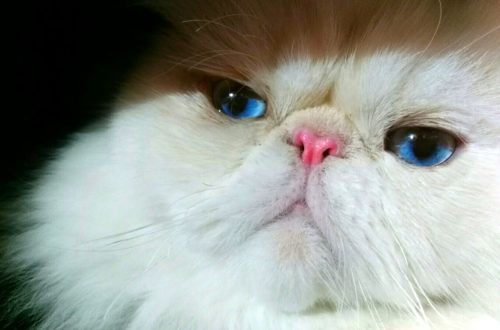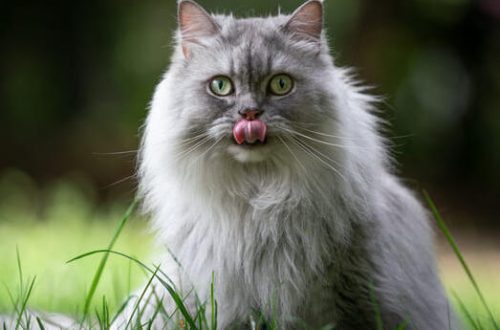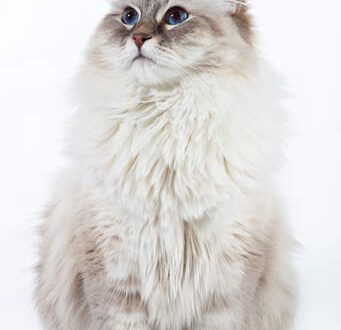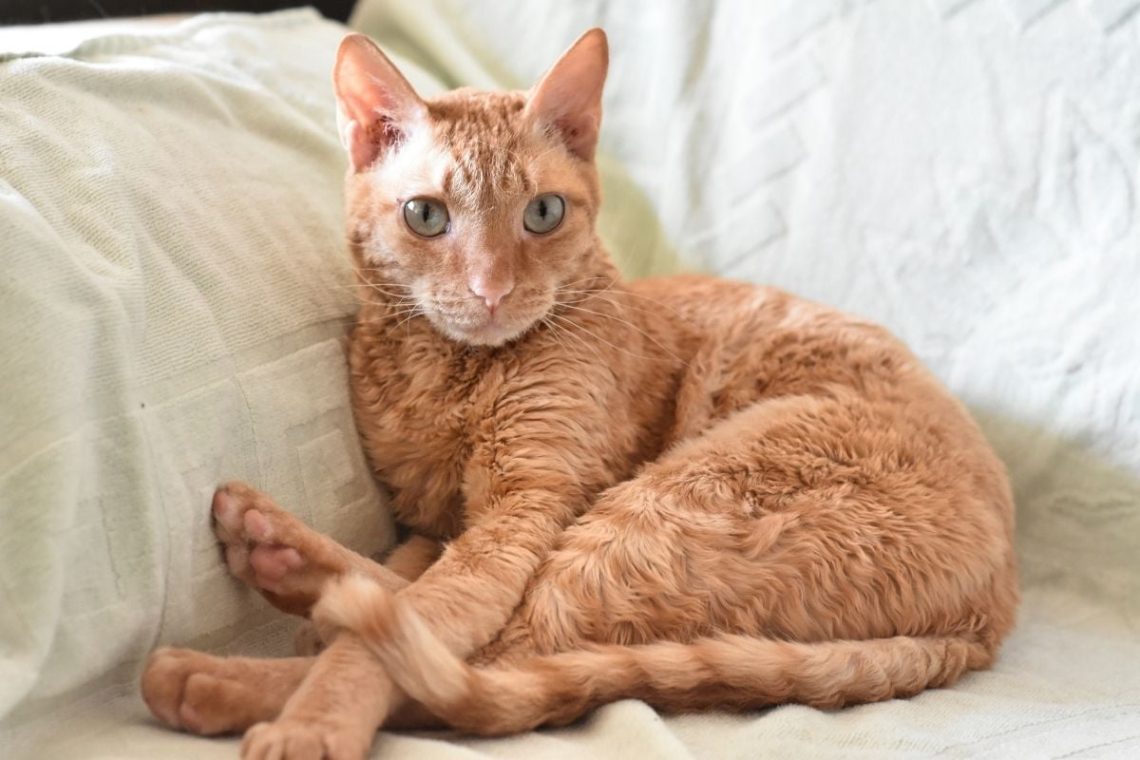
Ural Rex
Other names: Ural
The Ural Rex is an aboriginal type cat with curly, waved hair, bred in the Sverdlovsk region. The breed has not gained distribution in the world and is most often found in the Russian Federation and Germany.
Contents
Characteristics of Ural Rex
| Country of origin | Russia |
| Wool type | Shorthair |
| Height | 25–30 cm |
| Weight | 3–6 kg |
| Age | 12–16 years old |
Basic moments
- The Ural Rex is a slowly developing and very rare breed, due to the small number of its representatives, as well as its non-commercial image.
- The breed does not tolerate even short-term loneliness, so it is better to take a kitten to a family whose members work at different times of the day.
- Breeders of the Ural Rex often use a shorter name for their wards – “Urals”.
- There are several breeding lines of the breed, which can be confusing when choosing a kitten, as people from different catteries differ from each other in appearance. Lines known today are St. Petersburg, Moscow, Dresden, Sevastopol, Sverdlovsk.
- Ural Rex shed very little, which is why they are often listed as hypoallergenic pets. At the same time, the Fel d1 protein, which provokes sneezing and lacrimation in allergy sufferers, is present in sufficient quantities in the saliva of Urals.
- A characteristic feature of the breed is an intense purr at rest, so if you need a cat with a powerful “motor”, you should take a closer look at the Rex.
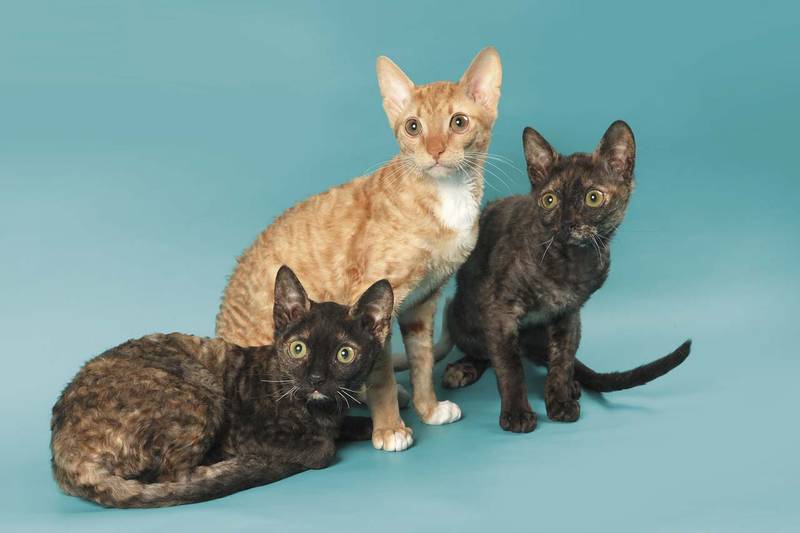
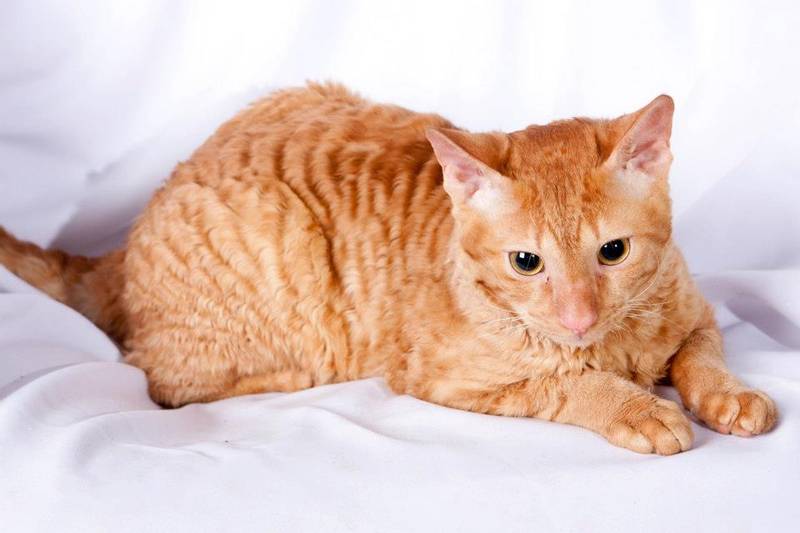
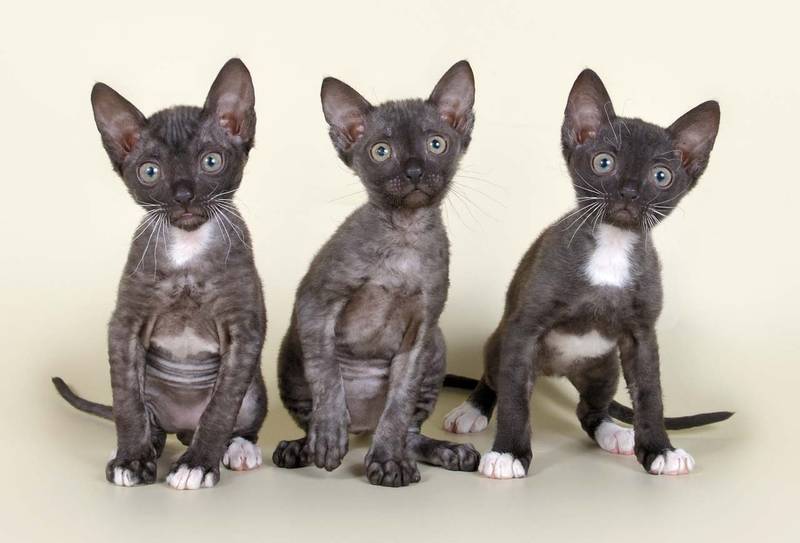
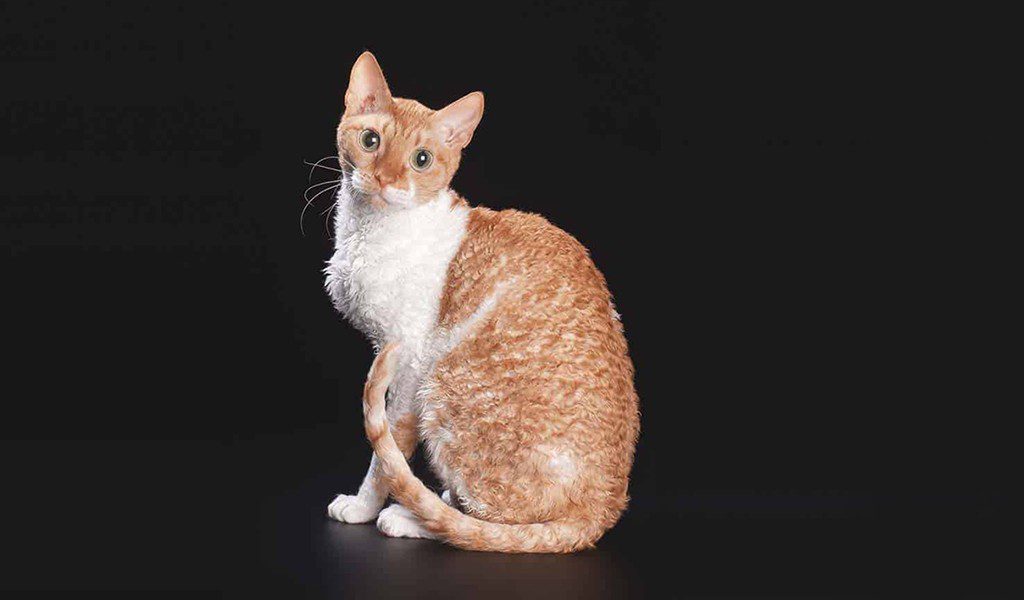
The Ural Rex is a taut “curly” that easily finds a common language with any living creature, except for representatives of the rodent family. Calm and unpretentious, the “Ural” will not cause trouble in everyday life and will not be picky if in his bowl there is not the kind of food he was counting on. In exchange for playfulness and a positive attitude, the cat waits for only one thing – the constant presence of a person in his life. Remember, loneliness not only irritates the breed, but also plunges it into a real depression, so when acquiring a Ural Rex, get ready to face a choice: either a career in the office, or a cat.
History of the Ural Rex breed
Based on the name of the breed, it is easy to guess that her ancestors were from the Urals. Moreover, the first curly cats appeared in this region back in the 20s of the last century and were an arbitrary product of an unknown genetic mutation. During the years of the Great Patriotic War, the number of cats in the Ural villages decreased sharply, so Soviet felinologists forgot about the Rex for some time, mistakenly adding them to the lists of extinct cat types.
In the 60s of the XX century, rumors about curly-haired cats again began to seep into the breeder community, but things did not go beyond talk. As a result, the starting point in the formation of the breed is considered to be 1988, when the cat Vasily was born in the Ural city of Zarechny. The animal had a glamorous “fur coat” in curls and had a presentable appearance, therefore, as they grew up, Vasya was knitted with straight-haired cats in order to obtain curly offspring.
The Ural Rex began to flicker at breed shows in 1993. Moreover, not only the descendants of Vasily were exhibited in the ring, but also curly individuals born from other cats living in the Sverdlovsk region. At the same time, breeding specialists tried to add Cornish Rex blood to the Ural phenotype. Such experiments did not give a positive result, but they made it possible to establish that the genes responsible for the structure of the wool curl are different in breeds.
An interesting fact: to date, another line of domestic curly-haired cats is known, leading its pedigree from the cat Murash, whose descendants were systematically crossed with Thais and Orientals. Strictly speaking, these pets are not Ural Rex, but since the animals do not have an independent breed status, they are sometimes mistakenly referred to as the “Ural” family.
In 2006 the WCF gave the green light for official breeding and pedigrees for the Ural Rex. Following the World Federation of Ural Cats, MFA and FARUS were registered. In the last decade, curly cats can be found not only in the Ural cities, but also in other regions of Russia, as well as in Germany and the CIS countries. At the same time, a very limited number of kittens that meet the standard are born and sold annually, which significantly slows down the spread of the breed.
Video: Ural Rex
Ural Rex breed standard
The Ural Rex is not the only curly cat recognized by felinological associations, but it is impossible to confuse it with other “corrugated” breeds. And the point here is not only that, unlike the Devon and Cornish Rex, the Ural has a more canonical feline image. The design of the wool curls in the breed is also peculiar, so its representatives look as if they were slightly wetted, and then the curls were fixed with styling wax.
The average Ural Rex is a pet of moderate size. Cats of this breed weigh from 3 to 3.5 kg. Males have a more textured appearance and tend to build muscle mass from 4 to 6 kg. It is worth paying attention to the fact that spectacular wavy hair is the prerogative of exclusively adult cats. Ural Rex kittens are born dressed in semi-closed chaotic curls that fit in even waves only by the age of 6-7 months. Complete “closing” of curls occurs only by the end of the second year of life, and in some individuals, with a longer type of coat, after 2 years.
Head
The skull is wide, in the form of a shortened wedge with soft outlines. The frontal part is rounded, the profile has a distinct transition with a slight stop. In purebred Rex, the cheekbones and pinch are pronounced. The muzzles of cats are wide and round, the chin is of a smooth contour.
Vibrissae
Long, twisted shape. Brittle hair is not welcome.
Ears
Ural Rex have small or medium sized ears. The optimal shape of the ear is like an equilateral triangle with a rounded top. The set of the ear cloth is as straight as possible with a good height.
Eyes
The bright eyes of cats are wide open and have the shape of tonsils. The upper eyelids of the Ural Rex are characterized by a straight line, while the lower eyelids are arched. The set of eyes is preferably wide: between the organs of vision there should be a distance greater than the length of one eye. Any color of the iris is allowed.
Frame
The bodies of the Ural Rex are compact, but toned and muscular. The torsos are developed and rounded, as are the chests. Abdominal folds are not marked.
limbs
The legs are of good proportions, slender, of medium length and strong bones. Well-knit, round feet end in toes of normal length.
Tail
Quite long, proportional, with a narrow base and thinner at the tip. The tip itself is neat, oval contour.
Wool
The body of the Ural Rex is covered with soft short hair of a silky texture. The coat forms a thin elastic wave of clearly visible curls. The curls themselves hold their shape perfectly. The fur coat acquires the most spectacular and curly appearance by the end of the second year of a cat’s life.
Color
Ural Rex are allowed to have wool of any color. Exceptions are ticked, as well as weakened colors in any variations, including tabby, solid, tricolor and bicolor varieties. Wool of chocolate and cinnamon tones is also considered an unacceptable option. At the same time, the standard allows animals to have white spots of any size and in any quantity on their bodies.
Faults and disqualifying vices
A real breed “Ural” should not be squat or too lean. The breeding commissions do not welcome such exterior features as a straightened profile, a narrow elongated head, round eyes, large or too tiny ears. Cats with any coat structure, except for the wavy type, as well as individuals with a sparse coat through which skin is visible, are subject to disqualification.
Character of the Ural Rex
The Ural Rex is not characterized by such truly feline character traits as the desire for independence and arrogance towards others. Moreover, a pet “professing” contempt for representatives of domestic fauna and persistently trying to prove its superiority to its owner is a kind of phenomenon that makes one seriously think about the issue of purebred animal. The correct Ural Rex is an invariably affectionate and playful cat, although not suffering from excessive clinging. This comrade is trying to spread his natural charm not only to people, but also to the rest of the four-legged inhabitants of the house.
It cannot be said that representatives of the Rex family are such soft-bodied goodies – in the mood of the “Urals” they are not averse to fooling around and playing with trifles dear to your heart, dropping them from shelves and tables. However, in general, “gangster” manners are not typical for the breed, so if the cat is a hooligan, then with one single purpose – to seduce you to participate in his games. For example, one of the cat’s favorite pastimes is fetching toys. According to the owners of the breed, curly kitties are completely and completely given to this occupation until the owner is ready to throw a cloth mouse or a ball. Sometimes rex is not averse to hunting, which is quite natural: the instincts of the Ural ancestors, who hunted for catching small rodents, are still strong in the breed.
In relations with fellow tribesmen, the “Urals” are friendly and peaceful. Cats are very sensitive to their own babies. Cats, in turn, do not try to deal with newborn offspring, which their outbred ancestors often practiced. On the contrary, fathers from the Ural Rex turn out to be first-class, on occasion always ready to babysit the younger fluffy generation. The rest of the “curly hair” are unusually cute, but quite typical cats who love to sunbathe and relax on the windowsills, love treats and consistently violate the boundaries of the owner’s personal space in the morning.
Education and training
In training the Ural Rex, it is advisable to rely on their innate passion for outdoor games and fun, so if your goal is to learn not only the norms of etiquette, but also a couple of circus tricks, you can easily afford it with the Urals. The first thing that begins with raising a pet is accustoming to a routine. To convey to the mind of a tiny lump the meaning of the concept of “mode” can be done with the help of strict planning of the day. Feed the kitten only by the clock, wean him from the habit of begging for food at night, always set aside time for an afternoon nap.
For the first six months, strong stressful situations that negatively affect the fragile psyche of the Ural Rex should not be allowed. Do not let the kitten play alone in the yard and in general in any place where it can be disturbed by adult cats or dogs. It is necessary to instill toilet skills in a pet with an eye on the experience of the first breeder. When buying a Ural Rex, check with the seller what type of toilet filler he uses. It has been proven that cats get used to the tray faster if there is already a familiar filler in it.
Usually, after moving, a small “Ural” is disoriented and is not immediately able to find a toilet in a new house, so in the first weeks the kitten needs to be planted on the owner’s tray. The optimal time to do wet things is 10-20 minutes after eating. The main thing is not to hide the tray in a remote room, but rather temporarily block access to other parts of the apartment until the baby gets comfortable and learns to use the toilet.
Along with hygiene skills, it is useful to master the nuances of using a scratching post. For the first scratches, scratching posts filled with valerian or catnip are suitable. At the same time, you should not hang them all over the apartment. At first, one accessory is enough. This will help the animal to quickly understand that you can grind your own claws in strictly designated places. As an option: bring fluffy to the scratching post immediately after sleep. Usually the need to look after themselves in cats occurs after a long rest.
If, despite all the lessons, the Ural Rex begins to misbehave and dissolve the furniture upholstery, use the fear factor. For example, unexpectedly spray it with a jet of water from a flower spray gun – it will not hurt the tailed bully, but the effect of an unpleasant surprise disciplines. In games with the baby, too, be on the lookout. Do not let the rex get into a rage, scratch and bite. At first, such aggression looks funny, but as your pet grows up, you will like such attacks less and less.
Maintenance and care
Ural Rex are unpretentious and mostly unpretentious cats. You don’t have to spend money on any special accessories for the breed, a classic set is enough: bowls for food and drink, a tray, a house or basket, scratching posts, toys for fun. Try to place the tray and food bowls as far apart as possible. Like most cats, Ural Rex are squeamish and try not to eat where they smell their own toilet.
Hygiene
The breed sheds very little, but the coat of cats always remains neat and showy. Too frequent brushing is not necessary for the Ural Rex – it is enough to stroke the body with a rubber mitten or a suede cloth once a week to collect dead hairs. In the off-season (spring, autumn), when the hair change is more intense, the procedure can be carried out twice a week. But kittens should be combed more often. This is the only way to speed up the process of changing from junior to adult wool, with a characteristic wavy structure and a full curl.
Bathing for cats is not contraindicated, but there is no point in abusing water procedures either. Urals have very sensitive skin, and every bath with shampoos and conditioners is a lot of stress, followed by a long recovery period for the epidermis. It is not recommended to dry the Rex with a hair dryer. Hot air has a negative effect on the structure of the wool curl, straightening it.
To clean the ears, it is better to use cotton pads or cotton cloth, as well as hygienic lotions such as Bars, Hartz, Pchelodar. Dust lumps can be removed from the corners of the eyes with a lint-free cloth soaked in chilled chamomile, tea or linden decoction. By the way, this procedure is considered an excellent prevention of mild eye inflammation, which most cats pick up.
Food
Несмотря на эффектную кудрявую структуру, шерсть уральских рексов тонкая и негустая. Как результат: на обогрев тела животному требуется чуть больше энергии, чем среднестатистической короткошерстной кошке. Обычно заводчики рекомендуют придерживаться общих правил кормления, подходящих для всех некрупных пород, но при этом слегка увеличивать калораж рациона, чтобы покрыть повышенную потребность «уралов» в энергетических запасах. Одновременно не забывайте держать руку на пульсе и соблюдать разумный баланс. Уральские рексы склонны к обжорству, приводящему к набору веса, что тоже может стать проблемой.
The natural diet of rex is standard: any lean meat (including chicken and rabbit), which is more useful to give raw, offal, buckwheat, rice and oatmeal (twice a week), vegetables and fruits (apple, zucchini, pumpkin, carrots). Once a week, the diet is supposed to diversify with boneless sea fish, egg yolk, and a piece of low-fat cheese. For the strength of bones and joints, the Ural Rex will have to be given dietary supplements, which a consultant in a veterinary pharmacy will help you choose. Another available vitamin option is sprouted oats and special cat grass, the seeds of which can be purchased at the store and planted in a tray so that the pet always has access to fresh greens.
For owners who prefer to feed their wards with industrial feed, buying bioadditives and planting cereals can be neglected. Professional feeds already contain a supply of all the basic microelements and amino acids necessary for a cat. The exception is cheap “drying” from the supermarket, which uses low-quality ingredients.
The feeding regimen of the Ural Rex:
- from 3 to 6 months – five times a day;
- from 6 to 9 months – four times a day;
- from 9 to 12 months – 3 times.
A one-year-old cat can be transferred to two meals a day without any worries.
Health and disease of the Ural Rex
The average Ural Rex lives quietly up to 14-15 years. As for genetic diseases, their specialists have not identified them. However, one should take into account the fact that the breed is extremely small and some breeders are positive about inbreeding (closely related crossing), so it is possible that freedom from hereditary ailments is temporary.
How to choose a kitten


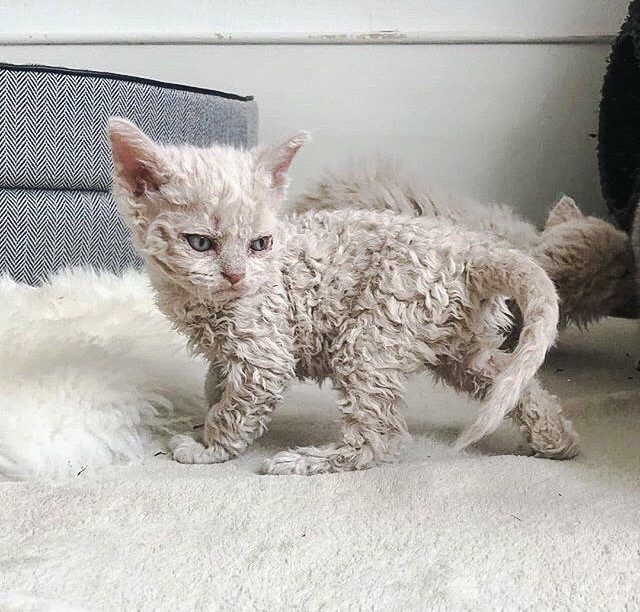
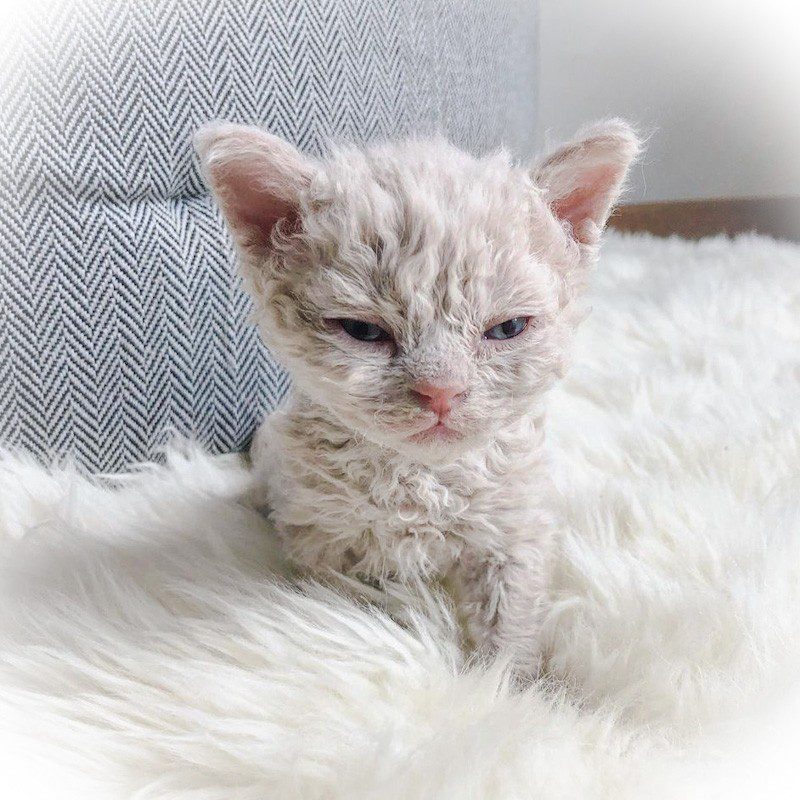
- Do not buy kittens from too young or too old parents. The optimal age of the breeder, according to the club breeding rules, is from 1.5 to 5 years.
- Specify what the litter for the year is. Estrus in cats can occur every few months, but since frequent births undermine the health of the animal and can cause non-viable offspring, experienced breeders adhere to the well-known club rule: no more than 3 births in 2 years.
- Before visiting the nursery, study the photos of young Ural Rex on the Internet so that the pattern does not break – Ural kittens do not look as impressive as adults, and you will have to come to terms with this.
- Look for reviews about the cattery and its owner. A mandatory requirement is the registration of the cattery in one of the felinological systems.
- Since the breed is small in number, and there are many unscrupulous sellers offering kittens of dubious origin, be sure to study the pedigree of the litter. It is desirable that at least one of the producers was noted at the breed show.
Ural rex price
Advertisements for the sale of Ural Rex on virtual bulletin boards do not appear very often, and curly mestizo kittens are usually displayed on them. It is better to look for real “Urals” in specialized nurseries with WCF registration. Usually the cost of a show kitten in such places starts from 450$ and ends in the region of 700-800$, depending on the pedigree, health status and exterior indicators of the animal. Sometimes matured and neutered Rex are offered for purchase, which cost one and a half to two times cheaper.



